Bamiyan Cultural Centre competition results announced
By Bustler Editors|
Wednesday, Feb 18, 2015
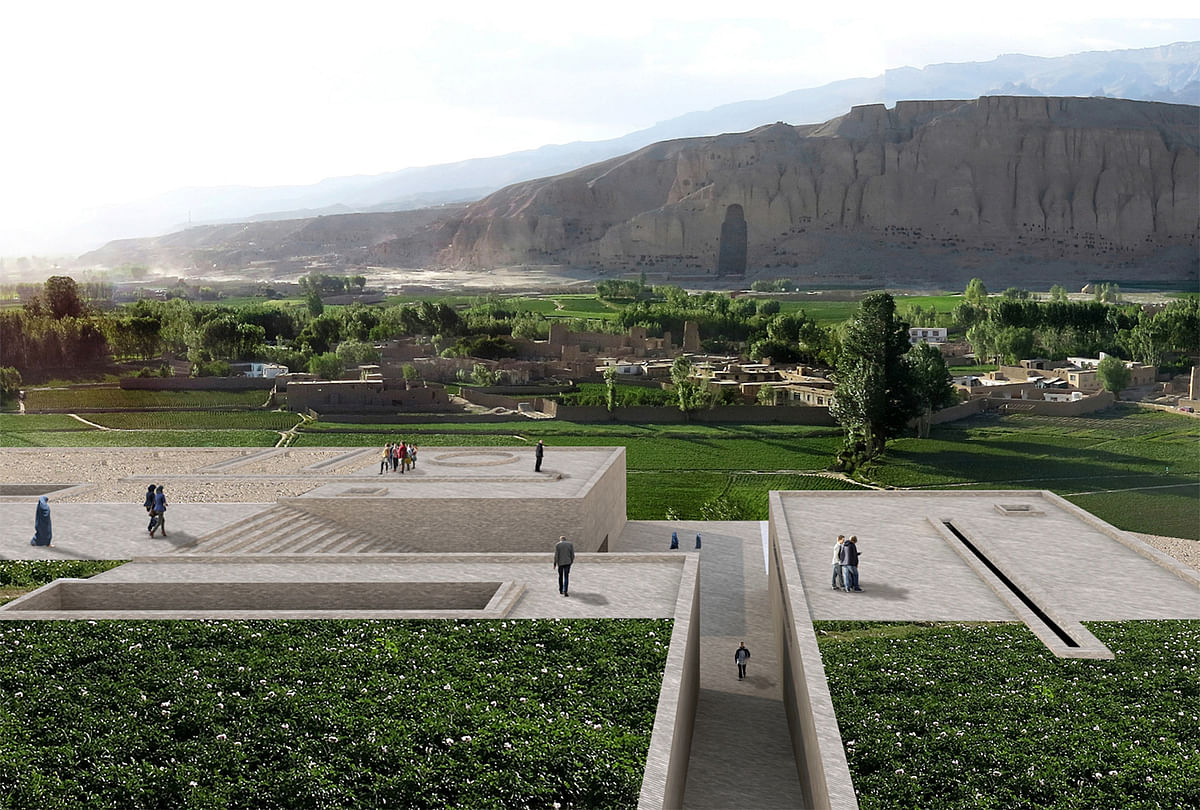
Related
The winning proposal has been selected for the Bamiyan Cultural Centre! The UNESCO Office in Afghanistan initiated the project as one step forward in the country's path towards reconciliation, peace restoration, and economic redevelopment after enduring years of political conflict.
Launched last November, the open competition attracted 1,070 entries from 117 countries. The seven-member Jury -- which included Ajmal Maiwandi, CEO of Aga Khan Trust for Culture in Afghanistan; Cameron Sinclair, Executive Director of the Jolie-Pitt Foundation and Architecture for Humanity co-founder; and Elizabeth O’Donnell, Acting Dean of The Cooper Union -- selected one grand prize winner and four runner-up teams.
- Winner: "Descriptive Memory: The Eternal Presence of Absence" by Carlos Nahuel Recabarren, Manuel Alberto Martinez Catalan, and Franco Morero | Argentina
- Runner-up: Ahmet Balkan, Emre Bozatli | Turkey
- Runner-up: Noel Dominguez, Zoe Salvaire, Agathe Culot, Anna Kampmann, Alexandre Ferron from Noel Dominguez Architecte – NDA | France
- Runner-up: Costas Nicolaou, Constantinos Marcou | Cyprus
- Runner-up: Graham Baldwin, Alessandra Covini | The Netherlands
UNESCO in Afghanistan, in partnership with the Afghan Ministry of Information and Culture and the Republic of Korea, will realize the Bamiyan Cultural Centre in a prominent location near the World Heritage property of the Cultural Landscape and Archaeological Remains of Bamiyan.
The winning team received a prize of US$25,000, while the four runner-up teams received US$8,000. Project implementation of the winning proposal will start immediately, which -- as reported last time -- currently has a US$2.5 million budget. UNESCO Afghanistan also hopes to have the Centre realized within a 24-month period.
Read more about each proposal below.
Winner: "Descriptive Memory: The Eternal Presence of Absence" by Carlos Nahuel Recabarren, Manuel Alberto Martinez Catalan, and Franco Morero | Argentina
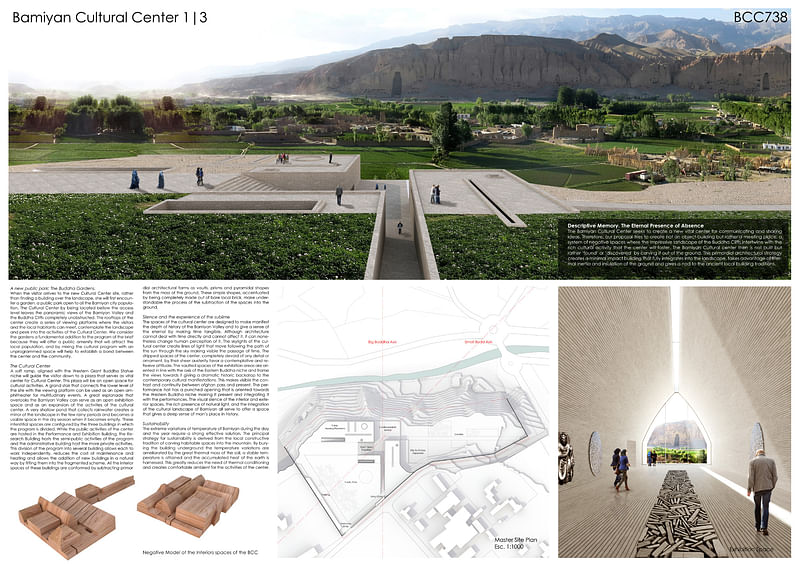
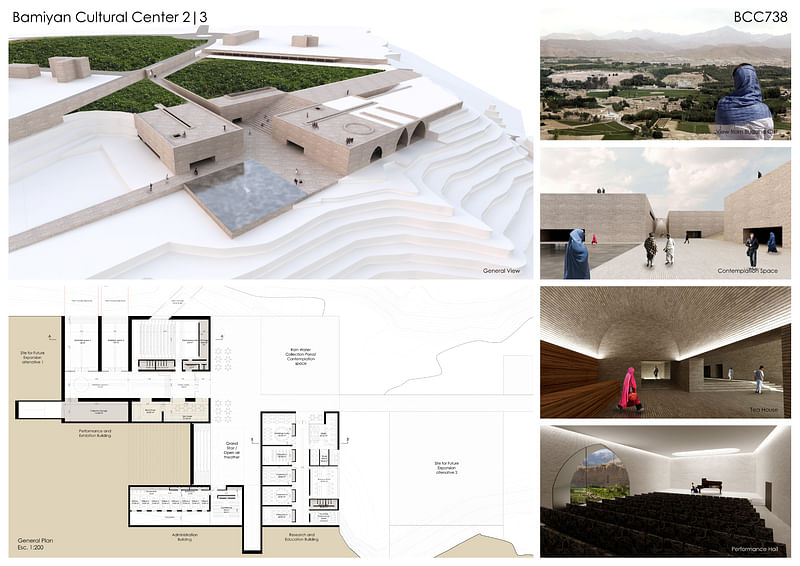

Project description: "The Bamiyan Cultural Centre seeks to create a new vital centre for communicating and sharing ideas. Therefore, our proposal tries to create not an object-building but rather a meeting place; a system of negative spaces where the impressive landscape of the Buddha Cliffs intertwine with the rich cultural activity that the centre will foster. The Bamiyan Cultural Centre then is not a built but rather ‘found’ or ‘discovered’ by carving it out of the ground. This primordial architectural strategy creates a minimal impact building that fully integrates into the landscape, takes advantage of thermal inertia and insulation of the ground and gives a nod to the ancient local building traditions."
Runner-up: Ahmet Balkan, Emre Bozatli | Turkey
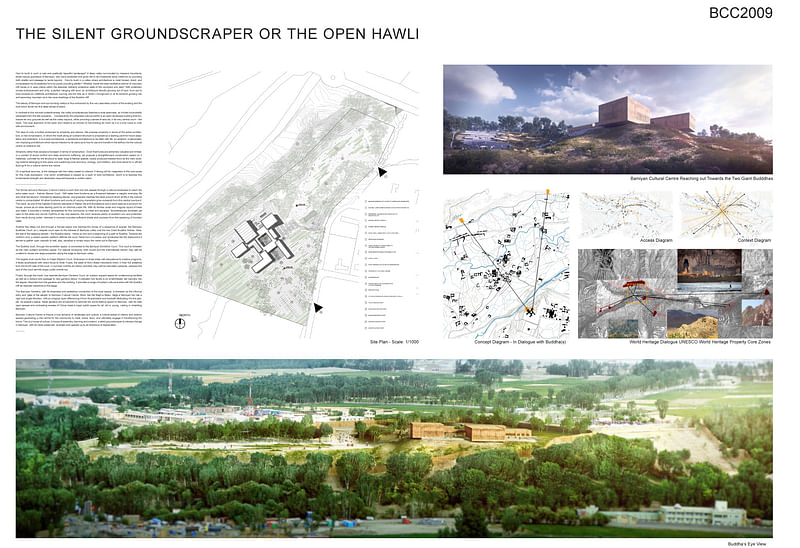


Project description: "The idea of unity is enhanced by simplicity and silence. We propose simplicity in terms of the entire architecture, a vital compression, in which the hawli along an outward structure is proposed as a starting point for future adaptation and extension. It is a bare-architecture, a backbone-architecture to be filled with life; an abstract, undecorated, non-imposing architecture which leaves freedom to its users as to how to use and transform the edifice into the cultural centre of collective will. Simplicity rather than excess is foreseen in terms of construction. Given that funds are extremely valuable and limited, in a context of social conflict and deep economic suffering, we propose a straightforward construction based on 3 materials: concrete for the structure to span large & flexible spaces; locally produced baked brick as the main building material belonging to this place and sustaining local economy, ecology, and tradition; and local stone for a refined flooring fit for a cultural centre this nature."
Runner-up: Noel Dominguez, Zoe Salvaire, Agathe Culot, Anna Kampmann, Alexandre Ferron from Noel Dominguez Architecte – NDA | France
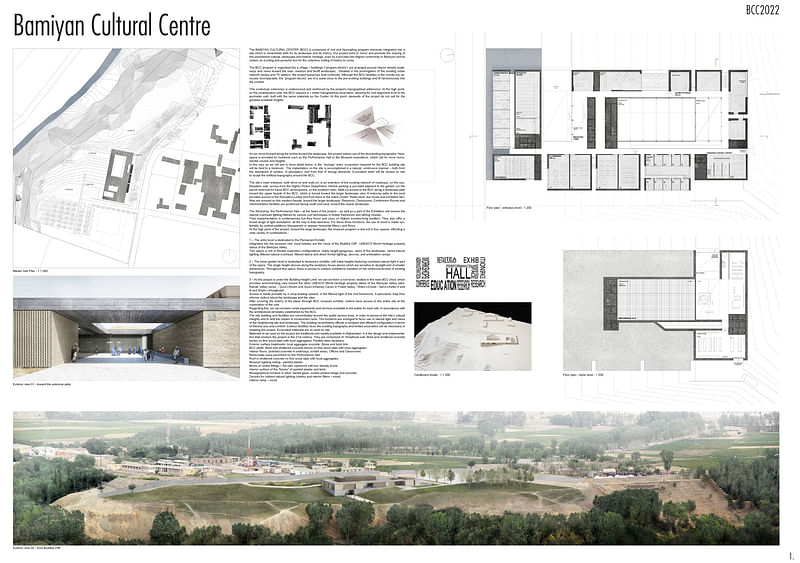
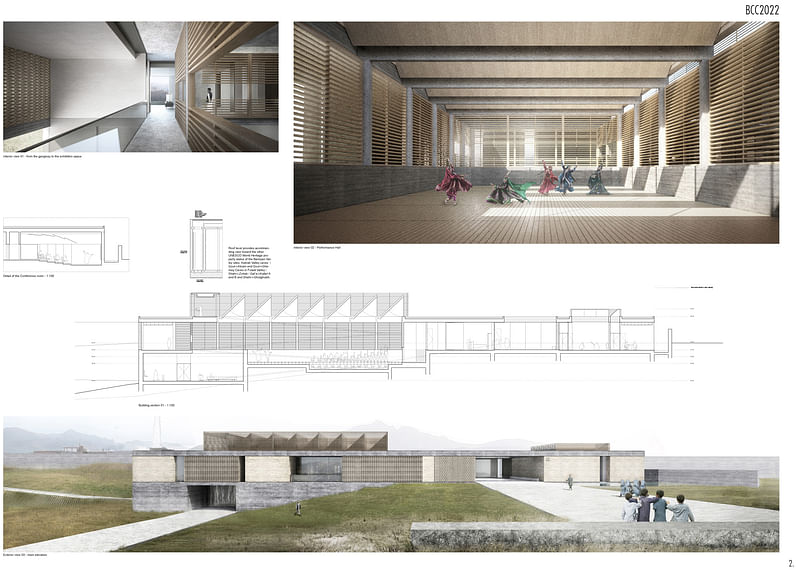
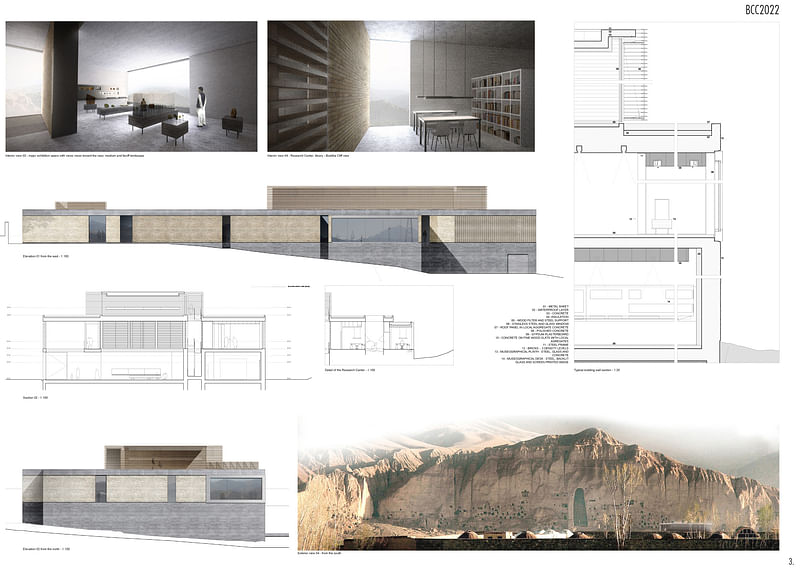
Project description: "The BAMIYAN CULTURAL CENTER (BCC) is comprised of rich and fascinating program elements integrated into a site which is remarkable both for its landscape and its history. Our project aims to honor and promote the sharing of this preeminent cultural, landscape and historic heritage, even as it provides the Afghan community in Bamiyan and its visitors an exciting and powerful tool for the collective writing of history to come. The BCC program is organized like a village – buildings ('program blocks') are arranged around interior streets (walkways and views toward the near, medium and faroff landscape). Situated in the prolongation of the existing urban network (police and TV station), the project preserves built continuity. Although the BCC facilities in the vicinity are obviously incomparable, the “program-blocks” are of a scale close to the pre-existing buildings and fit harmoniously into the context."
Runner-up: Graham Baldwin, Alessandra Covini | The Netherlands
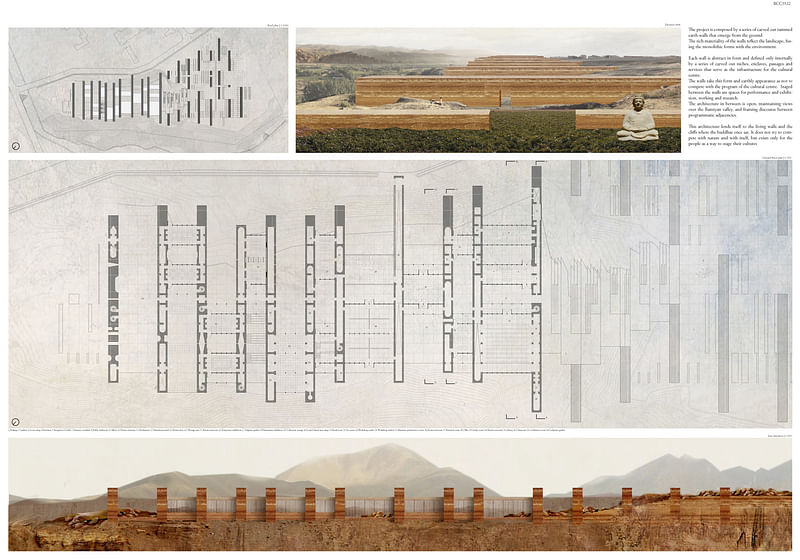


Project description: "The project is composed by a series of carved out rammed earth walls that emerge from the ground. The rich materiality of the walls reflect the landscape, fusing the monolithic forms with the environment. Each wall is abstract in form and defined only internally by a series of carved out niches, enclaves, passages and services that serve as the infrastructure for the cultural centre. The walls take this form and earthly appearance as not to compete with the program of the cultural centre. Staged between the walls are spaces for performance and exhibition, working and research. The architecture in between is open, maintaining views over the Bamiyan valley, and framing discourse between programmatic adjacencies. This architecture lends itself to the living walls and the cliffs where the buddhas once sat. It does not try to compete with nature and with itself, but exists only for the people as a way to stage their cultures."
Runner-up: Costas Nicolaou, Constantinos Marcou | Cyprus
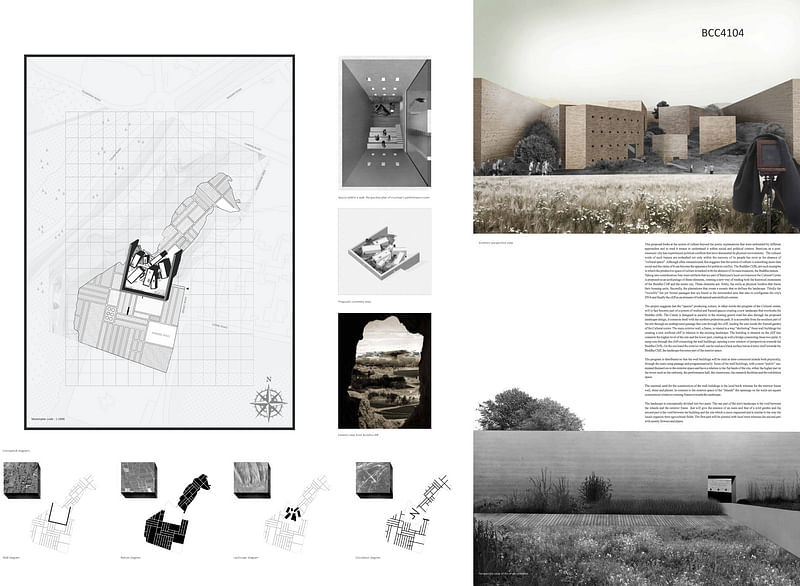
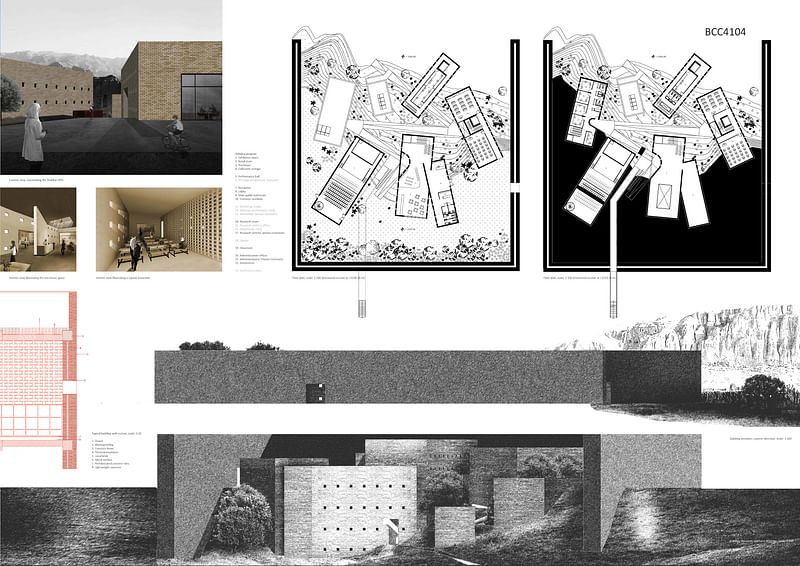
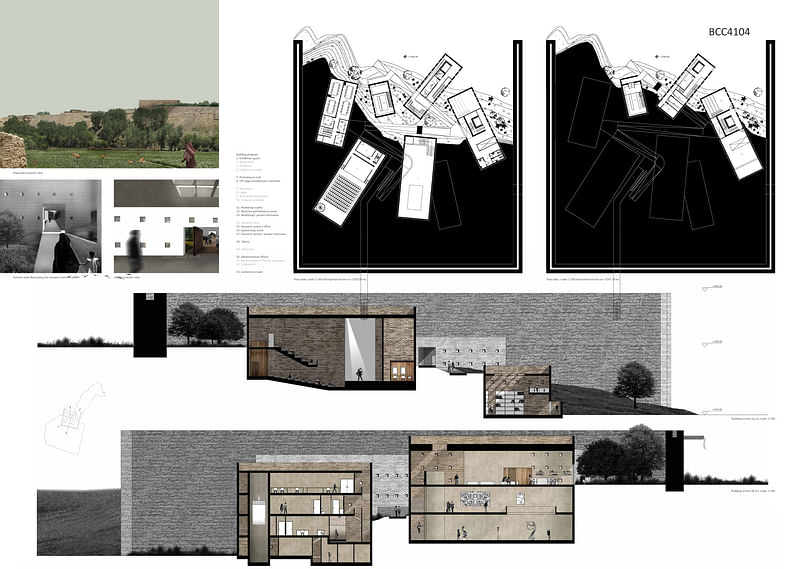
Project description: "This proposal looks at the notion of culture beyond the poetic explanations that were embedded by different approaches and to read it means to understand it within social and political context. Bamiyan as a post-traumatic city has experienced political conflicts that have dominated its physical environment. The cultural voids of such trauma are embodied not only within the memory of its people but exist as the absence of 'cultural space'. Although often romanticized, this suggests that the notion of culture is something more than social and the claim of it can become the apparatus for political conflict. The Buddha Cliffs, are such examples in which the productive space of culture is marked with the absence of its main treasures, the Buddha Statues. Taking into consideration four main artifacts that are part of Bamiyan’s local environment the Cultural Center is proposed as an archipelago of these elements, creating a new way of reading both the historical monument of the Buddha Cliff and the entire city. These elements are: firstly, the walls as physical borders that frame their housing units. Secondly, the plantations that create a mosaic that re-defines the landscape. Thirdly the 'invisible' but yet formal passages that are found in the surrounded area that also re-configurate the city’s DNA and finally the cliff as an element of both natural and artificial context."
All competition entries will also be available to view online on UNESCO Afghanistan’s website starting in mid-March.

Share
0 Comments
Comment as :